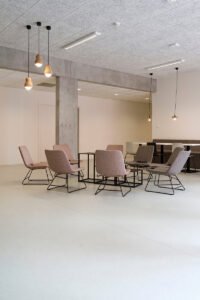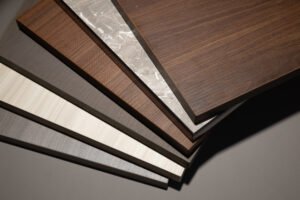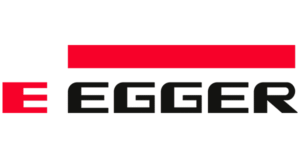I see orders drop when factories miss trends. I feel the cost and delay pain. I give ten clear trends you can use now.
In 2025, South America furniture demand is growing and local melamine/MDF use is rising. These shifts drive stronger demand for matched, affordable, and eco-friendly edge banding.

I will walk you step by step. I will name the trends. I will give actions you can use. My insight: I have tested some of these in client orders and saw faster repeat purchases.
Why Edge Banding Trends in South America Matter in 2025?
I see factories miss design shifts. I see finished panels returned. I show why trends matter now.
Trends matter because they change buyer preference, cost structures, and logistics. If you do not match trends, you miss orders and margins.

Market context and urgency
I look at demand first. Latin America furniture spending grew to about USD 32 billion in 2024. Buyers want modern looks at affordable prices. This growth makes small features, like edge banding, decisive in the sale.
How the trend affects suppliers
I list the impacts I see:
- Product mix changes faster.
- Buyers ask for matched palettes and fast samples.
- Price pressure rises, but so does demand for premium finishes.
Practical table: what I watch
| Area | Why it matters | What I do |
|---|---|---|
| Appearance | Drives first impressions | Offer matched samples quickly |
| Cost | Affects reorder size | Provide clear MOQ and pricing tiers |
| Compliance | Impacts exports | Keep test reports ready |
I advise you to treat edge banding as a strategic product. I make it part of quotes and samples. This reduces order loss.
Key Drivers Behind Edge Banding Demand in South America?
I see several drivers push demand. I name the main ones and show how they link to edge banding.
Drivers include rising home furnishing spending, melamine panel growth, supply links to Asia, and a stronger focus on price and sustainability.

Demand drivers explained
I break main drivers into clear points.
1. Growing furniture market
Sales and renovations lift panel use. This increase uses more melamine and edged panels. Manufacturers need matching edges fast.
2. Melamine and MDF use
Melamine-faced panels are popular for cost and look. They need matching edge banding. I track melamine panel growth and adjust stock of woodgrain and solid colors.
3. Logistics and new shipping routes
New Asia–South America shipping routes shorten lead time and lower cost for some items. This changes import economics and allows a wider range of edge options. I watch routes and transit times.
4. Sustainability and buyer demand
Consumers ask for greener materials. I see buyers prefer low-VOC edges and clear safety data. This raises demand for eco-labeled edge banding.
Structured view (table)
| Driver | Effect on edge banding | Action I recommend |
|---|---|---|
| Market growth | More volume, more SKUs | Expand color range |
| Melamine growth | Need for precise matching | Stock popular woodgrains |
| Logistics change | Faster, cheaper imports | Offer new imported finishes |
| Sustainability | Higher documentation needs | Provide test reports and RSLs |
I advise you to map each driver to an action plan. I use this map when I plan production and sales.
The Top 10 Edge Banding Trends in South America for 2025?
I know clients ask: what exactly to stock? I give ten trends and why they sell.
The top ten trends combine looks, materials, tech, and business needs. I list them with quick actions you can apply.

The list (short)
- Woodgrain matt finishes (natural oak, walnut).
- Light-tone and bleached woodgrains.
- High-gloss matched edges for lacquer panels.
- Matte solid colors, especially warm neutrals.
- Thin, invisible edge profiles (0.4–0.6 mm).
- Increased PET and acrylic edges for premium pieces.
- Low-VOC hot-melt and water-based adhesives.
- Demand for quick-match sample services.
- Small-lot and mixed-MOQ offerings.
- More local production and hybrid import options.
Why each trend matters (dive deeper)
Appearance trends
Buyers want natural looks. Woodgrain matt gives a modern feel at a fair price. Light tones match global design trends and work in small apartments. High-gloss edges sell with lacquered surfaces. Solid matte colors offer a premium look for kitchens and closets.
Material and tech trends
Thin edge profiles reduce the visible seam. PET and acrylic edges give higher scratch resistance and shine. Adhesive tech moves to low-VOC types to meet buyer expectations and export rules.
Business model trends
Buyers want fast samples. They want small lots. They accept slightly higher prices for faster delivery and better matching. I have shifted some production to shorter runs to capture these orders.
Action table for each trend
| Trend | Why it sells | Fast action to take |
|---|---|---|
| Woodgrain matt | Natural look, versatile | Stock top 8 woodgrains |
| Light tones | Modern, bright interiors | Add bleached oak samples |
| High gloss | Premium kitchens | Offer glossy matching sets |
| Thin profiles | Seamless look | Add 0.4–0.6mm specs |
| PET/acrylic | Durability | Source PET options |
| Low-VOC adhesives | Compliance demand | Test and label adhesives |
| Quick samples | Decision speed | Build a rapid sample process |
| Small MOQs | Local shops order small | Create mixed-MOQ packs |
| Local production | Lower freight risk | Set hybrid sourcing plan |
I used the above when I advised one distributor in Sao Paulo. They changed stock and won two new kitchen clients in three months. The speed of samples made the sale.
How These Trends Differ from Global Edge Banding Markets?
I compare South America to Europe, Asia, and North America. I show where to adapt offerings.
South America favors cost-effective matched woodgrains, quick local delivery, and flexible MOQs. Europe values high specs and certifications. Asia leads in specialty finishes and low price points.

Key regional contrasts
Europe
Buyers demand tight color matching and environmental certificates. They pay for certified low-emission materials. Suppliers often provide full test packets.
Asia
Producers push innovative materials and very low price points. Asia often leads in PET, acrylic, and metallic edges.
North America
Trend mix varies by segment. Kitchen cabinet market prefers high gloss and matte, with growing interest in sustainable choices.
South America (summary)
South America blends price sensitivity with rising design expectations. Buyers want good matching and faster lead times. They are open to higher-tier finishes if price and delivery match.
Comparison table
| Region | Main buyer focus | Supplier requirement |
|---|---|---|
| South America | Matching + price + speed | Quick samples, mixed MOQs |
| Europe | Certifications + precision | Lab reports, strict RSLs |
| Asia | Price + variety | Large volumes, diverse SKUs |
| North America | Quality + sustainability | Mix of certified and trendy SKUs |
I tell clients to avoid copying European SKUs without adapting MOQ and price. Small adjustments in stock and lead time win more business in SA.
What Manufacturers and Distributors Should Do to Stay Ahead?
I give clear, practical actions. I list what I would do if I ran your SKU plan.
Focus on matched samples, flexible MOQs, low-VOC options, and fast logistics. Document everything for export and buyer trust.

Concrete steps I use
1. Build a fast sample program
I prepare 5–10 best-matching samples per panel line. I ship local samples within 48–72 hours. This shortens decision time.
2. Offer mixed-MOQ packs
I create small mixed boxes (e.g., 10–25 m per color). This attracts small shops and custom makers.
3. Stock core woodgrains and light tones
I stock the top woodgrains and light tones. I refresh the range twice a year.
4. Use low-VOC adhesives and documentation
I switch to low-VOC hot-melts where possible. I keep SDS, RSL, and any emission reports with each batch.
5. Optimize logistics and hybrid sourcing
I combine local runs for fast SKUs and imported runs for special finishes. I track shipping windows and use nearby ports when possible. New Asia–Peru routes can cut time and cost for some imports.
Implementation table
| Action | Benefit | First step |
|---|---|---|
| Fast samples | Faster decisions | Set 48–72h sample SLA |
| Mixed-MOQs | More customers | Create mixed pack SKUs |
| Core stock | Better fill rate | Invest in top 12 colors |
| Low-VOC docs | Easier exports | Gather SDS/RSL files |
| Hybrid sourcing | Lower risk | Map suppliers and ports |
I also watch shipping risk. Volatility can raise transit time and cost. I keep a safety stock for core SKUs. This prevents missed orders during slow months.
Conclusion
I list ten trends, explain drivers, and give clear actions to win in South America in 2025.
Sources and links
- Cognitive Market Research — South America Home Furniture Market Report 2025 (market size and growth). https://www.cognitivemarketresearch.com/regional-analysis/south-america-home-furniture-market-report. (Cognitive Market Research)
- Cognitive Market Research — Brazil Melamine Faced Panels for Furniture (melamine panel market). https://www.cognitivemarketresearch.com/regional-analysis/south-america-melamine-faced-panels-for-furniture-market-report. (Cognitive Market Research)
- Data Insights Market — Sustainable Furniture Market (sustainability trend data). https://www.datainsightsmarket.com/reports/sustainable-furniture-1861251. (数据洞察市场)
- Reuters — China’s Guangzhou port starts shipping route to Peru (logistics route impacting imports). https://www.reuters.com/world/china/chinas-guangzhou-port-starts-shipping-route-peru-2025-04-29/. (Reuters)
- Reuters / UNCTAD coverage — Tariffs and conflict causing volatility in shipping (supply chain risk). https://www.reuters.com/world/middle-east/tariffs-conflict-causing-major-volatility-shipping-industry-says-un-trade-agency-2025-09-24/. (Reuters)





